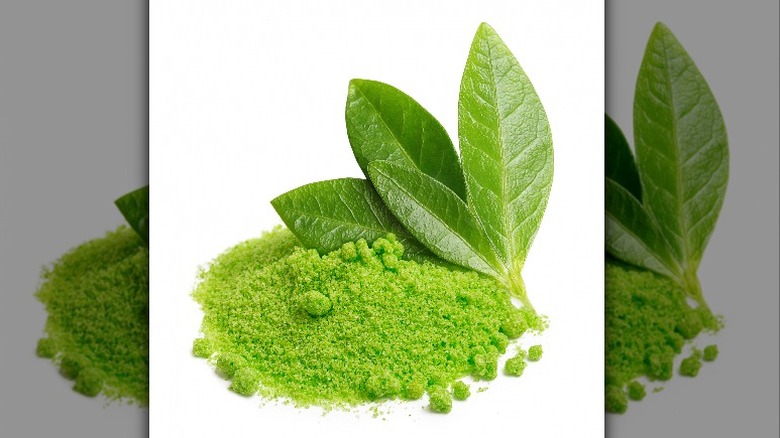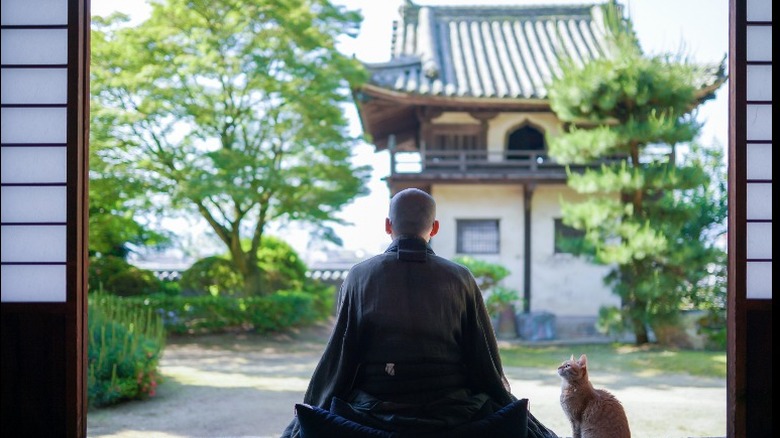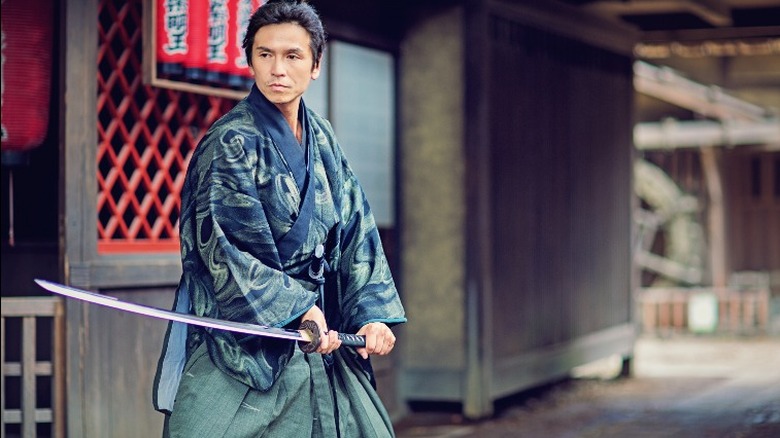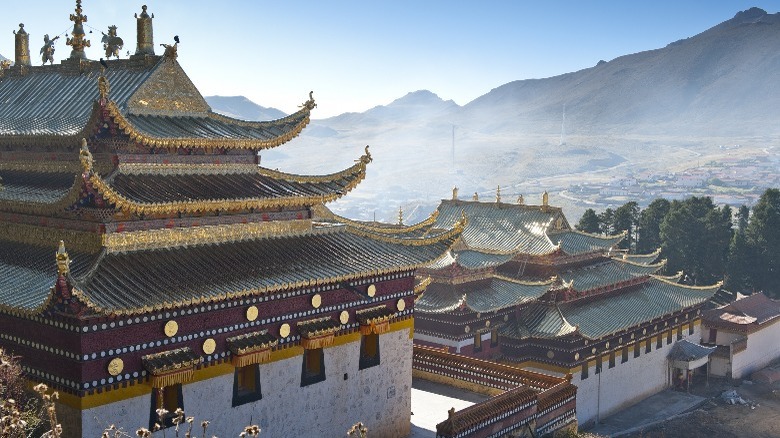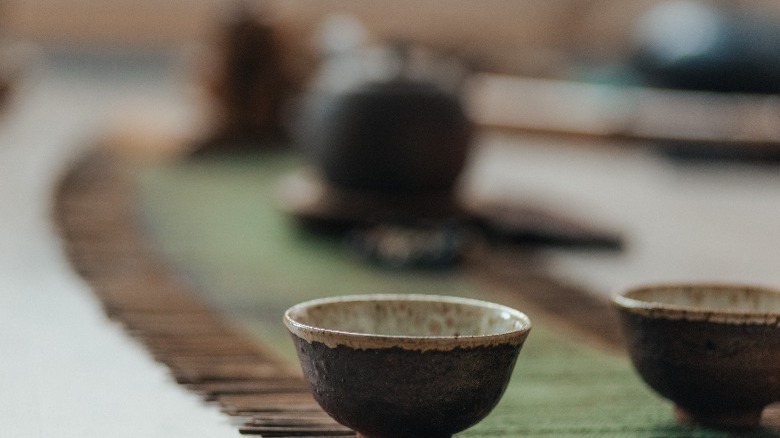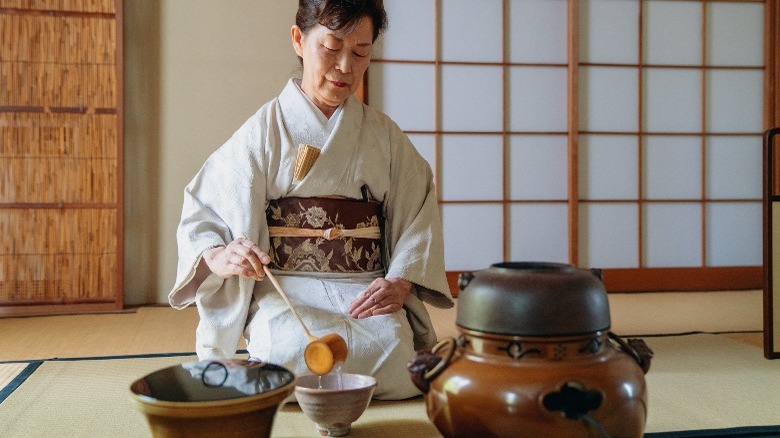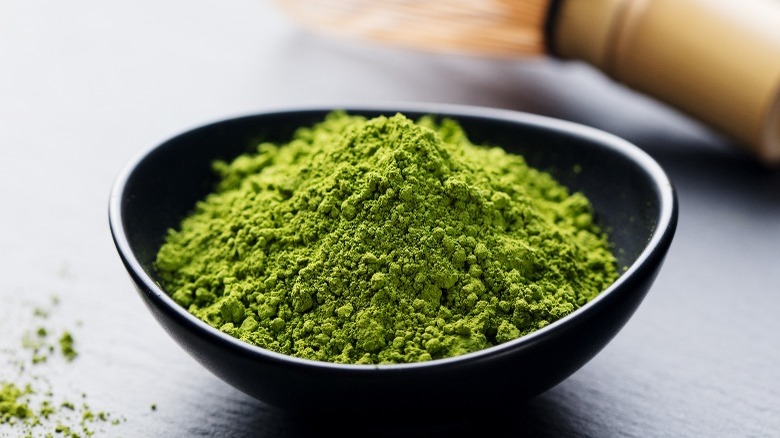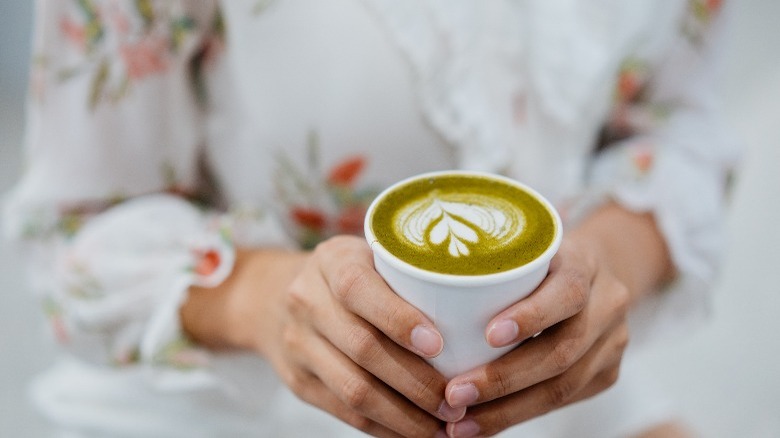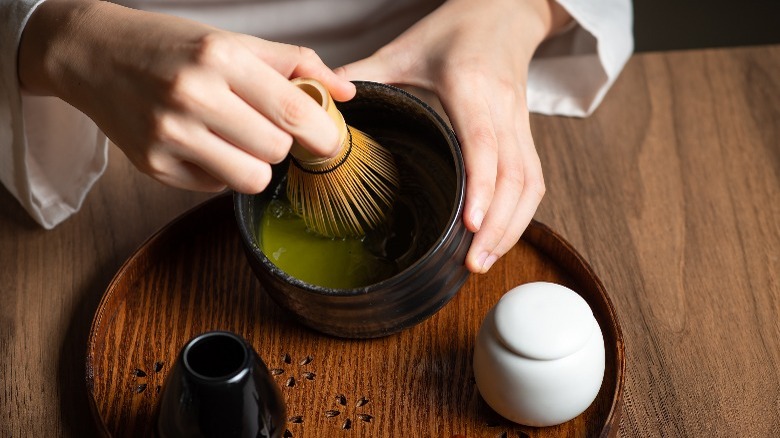The Ancient Buddhist Roots Of Matcha
Many of us add Japanese matcha tea to our smoothies or shakes or enjoy the green powder in tea form for its many health benefits, from protecting the health of your liver to boosting brain function (via Healthline). However, not many people know the ancient Buddhist roots of this green tea.
From its origins in 10th-century China — not Japan, which may surprise you — to its discovery by a Buddhist monk in the 12th century, we dive deep into the rich, fascinating history of matcha. We'll uncover the secrets of ancient matcha preparation and rituals and see why it became so popular in Japan's zen monasteries.
Along the way, we'll explore modern-day matcha rituals and tea ceremonies, look at how ceremonial grade matcha is cultivated, and discover what matcha symbolizes — and the role it plays in Japanese society today. So sit back, relax, and pour yourself a fresh matcha latte — or a regular cup of tea, if that's more your thing — as we look at matcha's ancient Buddhist roots.
Matcha has Chinese, not Japanese, origins
In order to understand matcha's roots, we need to go back to China's Song Dynasty (960-1279), when the first powdered tea, the ancestor of matcha, originated. During this time, steamed and dried tea leaves were ground into a fine powder and pressed into bricks. This not only kept the tea fresh but also made it easier to transport to shops and markets across the country.
A famous monk named Eichu is supposedly responsible for green tea's popularity among Japanese royalty. The story goes that he served green tea to Emperor Saga, who enjoyed the beverage so much that he inisisted on the cultivation of green tea plantations across the Kansai region of Japan.
This first wave of Japanese tea drinking was limited to sencha green tea (that is, tea brewed from leaves rather than powder). We didn't actually see the arrival of matcha until a few hundred years later, and it originated in China, not Japan. Monks from Chinese monasteries prepared matcha in elaborate rituals to stay alert and awake during long hours of meditation.
A Buddhist monk discovers matcha
Matcha was brought to Japan by Myoan Eisai, a monk from the Tendai Sect, who traveled to China in 1187 and discovered tea seeds. He saw how Chinese monks steamed and dried green tea leaves before grinding them and packing the powder into molds. Later, he watched them break off a chunk from these tea "bricks," mash it into a fine powder using a mortar and pestle, then whisk the powder with hot water in a shallow bowl to prepare matcha.
This was the beginning of the Japanese matcha ritual that would go on to become sado, or The Way of Tea — often referred to in the West as the tea ceremony. Following Eisai's efforts, the popularity of matcha — and green tea — grew and spread across Japan and was embraced by Japanese monks.
As for Eisai? He spent the rest of his days writing about and teaching the philosophies of Zen Buddhism and matcha. He even wrote a book about tea's many health benefits: "On Drinking Tea for One's Health."
Matcha becomes popular with Japanese samurai
By the 16th century, the ritual of making and drinking matcha began to grow in popularity among Japanese nobility and samurai. Professional tea masters were hired by wealthy families to ensure tea rituals were carried out with the utmost respect and harmony.
Matcha still wasn't available to the lower classes of Japanese society. Its purity, associated cost, and the elaborate rituals of the tea ceremony ensured that only the wealthiest in society could afford to indulge in such luxuries.
As nobility acquired a taste for matcha, tea growers were improving their knowledge of the powdered green tea. They learned new cultivation techniques, resulting in the production of higher-quality tea. Ceremonial-grade matcha wasn't yet a thing, but it soon would be. At the same time, matcha was becoming a staple in Zen monasteries across Japan, and the beverage began to take on ceremonial meanings beyond its utility as a stimulant.
Matcha in Japan's Zen monasteries
Monks in Japan's Zen monasteries embraced the arrival of matcha as it grew in popularity with royals and the wealthy across the country. Not only did Zen Buddhist monks enjoy matcha's taste and ability to keep them alert and awake, but they also enjoyed the medicinal properties of this powdered green tea and used it to enhance their mental focus.
Nowadays, matcha is considered a superfood, packed with antioxidants that could help fight cancer (via Britannica). It's also thought to be helpful for anxiety and stress and contains catechins, which can help reduce cholesterol levels and lower blood pressure.
We know now that several components in matcha can boost brain function, with studies showing those consuming matcha experiencing improvements in memory, reaction time, and attention span (via Healthline). While the monks of the past hadn't yet made these scientific discoveries, they felt that consuming matcha had a positive effect on their bodies and minds — and, they were right.
16th-century tea rituals
Earlier, we mentioned sado, or The Way of Tea — also known as Chanoyu — and its introduction in the 15th and 16th centuries. The strict rules and rituals of the tea ceremony demanded expert knowledge and became an art form, necessitating the hire of Tea Masters.
Royals and nobility often hired tea masters to conduct tea ceremonies and demonstrate the art of tea making. This often took place alongside other art forms including flower arrangement and calligraphy.
One of the most famous Tea Masters, Sen no Rikyu, studied tea and Zen principles in his youth before becoming tea master to the legendary samurai Oda Nobunaga in 1579. Rikyu infused his tea rituals with four principles: harmony (wa), respect (kei), purity (sei), and tranquility (jaku).
Later, his teachings and philosophies became the foundation of three main iemoto (head houses) of sado: Ura-senke, Mushakoji-senke, and Omote-senke. These three head houses carry on Rikyu's principles to this day, focusing on the spiritual aspect of the tea-making ceremony.
Modern-day matcha rituals
Today's matcha rituals remain as elaborate as the ancient rituals that inspired them. Preparation before a tea ceremony is key, with Japanese tea houses serving a traditional kaiseki meal (many small dishes) alongside Japanese sweets before the tea drinking begins.
As the ritual commences, a folded silk cloth is used to wipe the natsume (tea jar) and chashaku (tea scoop). The hishaku (ladle) is used to scoop hot water from the kama (iron pot) and into the chawan (tea bowl). The host uses this water to clean the bowl and chasen (whisk) before discarding the dirty water and drying the bowl.
Next, around one and a half scoops of matcha are scooped from the tea jar into the tea bowl. A full cup of hot water is then poured slowly over the matcha. The host picks up the tea bowl and quickly whisks the matcha until a light green foam gathers in the center of the bowl, which is then cleaned and presented to the guest, with the most beautiful side facing them. As they drink, it's traditional to turn the bowl so the most beautiful side faces the host. The shokyaku, or main guest at the ceremony, is always the first to drink the matcha. They are also the only guest permitted to comment on the quality of the tea.
This ritual repeats, with the bowl being cleaned and more hot water added for each guest, until everyone at the ceremony has enjoyed their tea. An important philosophy for chanoyu or Sado is "Ichi go, ichi e," which means "One time, one meeting." Each ceremony is a one-off, never to happen again, so it's important to focus on the moment.
Crafting ceremonial-grade matcha
The very finest ceremonial-grade matcha in Japan is grown in the Uji region near Kyoto, where it has been cultivated for around 800 years. The mild climate and moisture from the river here make for perfect growing conditions.
It's here that the traditional method for shading tea plants from the sun — which results in the strong flavor matcha is known for — originated, using specially constructed wooden structures topped with straw. During the 15th and 16th centuries, this became such a popular way to grow tea that the shogun declared only the Uji region could use the method. It's still used at some farms today, though others use a more modern nylon covering with a pulley.
The ceremonial-grade matcha produced in Uji is extremely rare, with the oldest farm here, Horii Shichimeien, home to some tea plants that are 600 years old — the other plants at the farm are all descendants of the original plants. Each farm uses its own secret nutritional recipe to fertilize tea bushes — anything from palm oil to fish scraps — and the oldest plants produce the tea with the strongest taste, smell, and color. Uji matcha is harvested by hand once a year at precisely the right time, and the only way to ensure you're getting the real deal is to buy your tea from one of the farm shops in person.
As low-grade matcha has soared in popularity across Japan and the world, the number of tea farms in Uji has declined. Today there are only 60 farms left growing tea in the region.
What does matcha symbolize?
In ancient times, the art of making, appreciating, and consuming matcha was reserved for the wealthy, including daimyo (feudal bosses), samurai, and royalty. Japanese daimyo hired tea masters not only to prepare tea for their families, allies, and enemies, but also to bring prestige to their homes. Many high-ranking officials and samurai, like Odu Nobunaga, collected high-quality tea utensils and ceramics as an indication of their power. Matcha was also viewed as a way to boost energy levels and bring focus to the mind among Zen Buddhist monks.
Today, matcha is seen as a symbol of good health and a commitment to wellness. It's added to smoothies, shakes, baked goods, and other products for its distinctive green color, strong flavor, and health benefits. It's often linked to Buddhism, as well as yoga and meditation, as a way of connecting with one's higher self and aspiring to mental and physical wellness.
Matcha today: A key part of Japanese society
While matcha remains a key part of Japanese society, it's also undergoing something of a global boom. A report published by Analytical Research Cognizance revealed that matcha sales in the U.S. had increased to over $10 billion over the last 25 years (via the BBC). The demand isn't for the high-quality, ceremonial-grade matcha grown in Uji, though. The cheap, low-quality matcha added by the scoopful to lattes, shakes, and baked goods is where the money is.
People are drawn to matcha, both in Japan and around the world, for its health and wellness credentials, but also for its bright green color that ensures it stands out on Instagram and other social media sites. Yet when it comes down to it, sencha green tea — which has its own host of health benefits, per WebMD — is a more popular everyday drink in Japan.
Whether you love the strong, distinctive taste and vibrant green color of matcha or can't stand it, there's no denying that this powdered green tea remains a key part of Japanese society today. From ancient Chinese roots to modern-day matcha lattes, matcha is here to stay.

